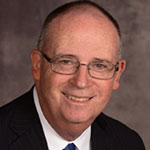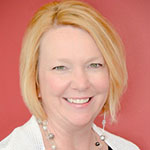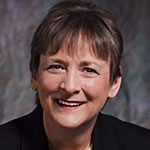Chapter 2: Plotting the Course
By UMCPlantingJourney
"For where two or three are gathered in my name, I'm there with them." – Matthew 18:20
How discipleship formation scaled up through the denomination
Before Path 1, in the years leading up to General Conference 2008, there was a crisis of decline in the United Methodist Church in the United States. This is a short oral history of that time, taken from the point of view of church leaders who lived it: Bishop Lindsey Davis was bishop of the North Georgia Annual Conference. He retired from the episcopacy in 2016, after serving as Bishop of the Kentucky Annual Conference. He lives in Lexington, Ky.
Bishop Lindsey Davis was bishop of the North Georgia Annual Conference. He retired from the episcopacy in 2016, after serving as Bishop of the Kentucky Annual Conference. He lives in Lexington, Ky. Christie Latona is a leadership coach and organizational development consultant. She is the Director of Connectional Ministries for the Baltimore-Washington Annual Conference.
Christie Latona is a leadership coach and organizational development consultant. She is the Director of Connectional Ministries for the Baltimore-Washington Annual Conference. Rev. Karen Greenwaldt was General Secretary for the General Board of Discipleship (now Discipleship Ministries). She retired in 2013 and lives in Lake Junaluska, N.C.
Rev. Karen Greenwaldt was General Secretary for the General Board of Discipleship (now Discipleship Ministries). She retired in 2013 and lives in Lake Junaluska, N.C.
Bishop Lindsey Davis:
The Council of Bishops had been working on some priorities. We actually originally had 13 but when we got them down to seven — we hadn’t yet gotten them down to four — one of them was new church development. I had been in communication with not only my church developer at the time in North Georgia, but several others that I knew. The bishops decided to try to come together and see if the church developers were interested in this being a priority.
And of course, they were. They had been meeting for a number of years together as a network, trying to encourage conferences to make commitments, financial and otherwise, toward church development with some success in various places. I basically brokered a meeting in Atlanta [in May 2006] out at North Georgia’s headquarters, which at the time was Simpsonwood. We invited a number of those key network developers, and then we invited some other folks.
They wanted to keep it just in house, just church developers. I said if it’s going to be a church-wide kind of commitment, then you can’t do it and not invite some of the other interested stakeholders. There were a lot of folks that really didn’t want to do that, because then it would become bureaucratic and we won’t get anywhere. I said, well, we’ll get torpedoed right off the bat. We can extend an invitation to all these other groups of people, particularly the national ethnic minority plans, and the general boards and agencies. If they come and participate and want to work in common directions, that’s great. If they decide they don’t want to, then that’s fine, too.
There was a good bit of disagreement about which way we ought to go, but eventually we decided on a strategy group, and we just called it the Path 1 team. It was about a dozen, maybe 13 people, which was a little larger than I wanted it to be, but at that point I didn’t think it would help us to exclude people. So we began meeting [in September 2006] and we were blessed tremendously with a consultant that I had known who came in, a woman named Christie Latona.
Christie Latona:
The understanding was the best strategy for making more disciples, more younger disciples, more diverse disciples was through new church starts. That was the strategy. That was never the focus.
It was sort of that whole, from everybody’s perspective, what would make this work? And how do we get to this idea of getting back to the denominational habit of a church a day? The last time we were growing, we were doing that kind of thing.
The progression of starting with church starts as the lead versus wanting more diverse people, more younger people, versus it being about disciples, I think it was an evolution. I’m looking at it from outside the system looking in. All of the components were present. It just was, what do we lead with? What is most clear? And I think that as the denomination started to get its four foci together, we started to understand very clearly that it always starts with small groups. That’s at the heart of discipleship formation.
This idea of starting to explore this nesting of the small group’s missional community, and then something that could potentially become a chartered church, [it was] all with the understanding of discipleship formation. And I think when the denomination started talking about its goals, it became easier for us to lean into it from a making-disciples perspective.
If I was going to talk about the different scenes around the initial discussions, it was around "where is the control located for this?". The decision was made for it not to be a part of the Book of Discipline, because that would delay us even more. There was this whole thing around timing, because we were feeling 10 years too late. What is the fastest way that we could get something happening? That was a really strong consideration in those initial discussions.
We always had at the heart of it this understanding that prayer was going to be essential, to not just church starts in general, but to us specifically. There was a whole team devoted to that, and for discernment on that. It was coming through that, and to wrestle with whether or not this is helping us make disciples.
What do we lead with What is most clear And I think that as the denomination started to get its four foci together, we started to understand very clearly that it always starts with small groups. Thats at the heart of discipleship formation. Christie Latona br br
Davis:
The other key ingredient was Karen Greenwaldt, who was general secretary of the Board of Discipleship at the time. I mean, we didn’t have any money. We didn’t have any funding, and the Council of Bishops has no funding for any of this, either. And so Karen provided a lot of the early support, program support, to get us together and give us a place to meet.
We met quite often in the Board of Discipleship office in Nashville. Karen’s a pretty good process person. She knew all the politics of the church. And so we began to work through it. I think Karen’s goal was to draw all of that under Board of Discipleship, which is eventually what happened. But not everybody was excited about it.
I kept saying, look, unless we’ve got someplace to locate this emphasis, the annual conferences aren’t going to pay for it. They’ll pay for whatever happens in their annual conference. They’re not going to pay for what happens in somebody else’s annual conference. The Board of Discipleship is the place for this, and I give Karen a lot of credit. She took a lot of guff from many directions, but she kept working at it.
She knew it was in the best interest of the church for us to continue to try and move forward. And so with some fits and starts, we did.
Karen Greenwaldt:
I’ve been involved in this conversation since I was a kid. My dad was a pastor. I can tell you a really interesting story. We were eating supper one evening. Dad had come from a meeting with his district superintendent, kind of a pastors district meeting, I think. Anyway, Mom just said, “So, how was your meeting?” Dad, uncharacteristically, just started to cry.
And Mom looked at Daddy and asked, “What is wrong, Bill?” And Dad just said, “The church is going to decline.” And Mother said, “What do you mean by that?” And he said the church had decided we’re going to quit having quarterly conferences, and it's going to quit reporting visitations, professions of faith, attendance at worship, attendance at Sunday school, all those things they had to do for quarterly conferences. Dad said, “The church is going to decline because the focus of pastors is going to move from whether we're reaching people to doing other things.” Mom said, “Well, you hate doing those reports.” He said, “I know, but because I do those reports, it's always on my mind, this quarter, how many baptisms, or professions of faith, or whatever.”
I was in either late junior high or high school when this conversation happened around the dinner table. I remember that, and my heart just kind of broke watching Dad, and over the years after that, I paid attention to numbers and whether or not churches were growing in the Central Texas Conference. When I got to the General Board of Discipleship, we would get those reports. I would look at those annual or quadrennial reports and I began to notice for certain the church was declining numerically. And I then began to wonder about the question of new places for new people, and whether or not we were doing that. And it was clear to me that we weren't.
So when it came time for me to have this conversation with the congregational developers, or with the bishops, I didn’t have to be convinced. I was concerned about it, and I was tired of reading the annual conference reports about decline of this and decline of that. I just said, this has got to stop.
I began to attend some of the meetings, have conversations with these conference congregational developers. I was having conversations on the edges with the Council of Bishops about what was needed in the church. There was a common agreement that we needed in the denomination a major emphasis on congregational development.
You know, we had some tough conversations. It was not an easy go. For some reason, there was a mood about not trusting anybody outside their own conference.
My role was, frankly, to make sure that we at GBOD figure out how we’re going to staff this thing, how we’re going to pay for it without increasing the church’s budget, without increasing Discipleship’s budget and make sure these players and partners had a place at the table.
PREVIOUSLY: Chapter 1: Developing a Map
